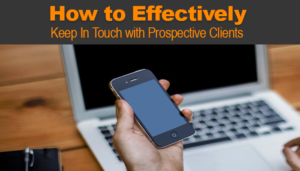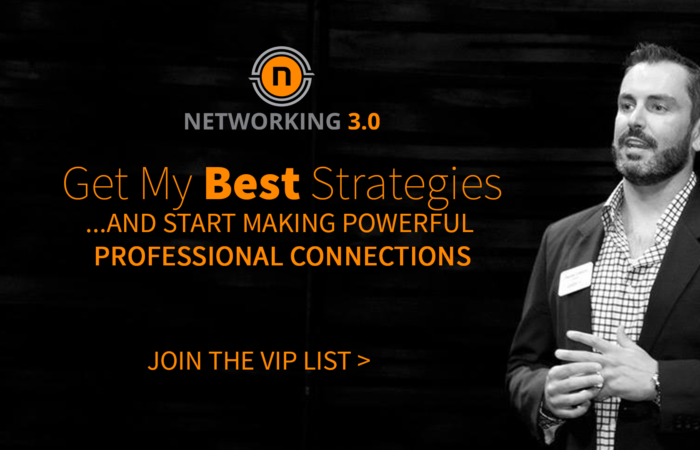How to Effectively Keep In Touch with Prospective Clients
 In a previous post, I introduced the idea of “Passive Loyalty” and the likelihood that the majority of your ideal clients are currently working with your competition, but they are indifferent towards them at best.
In a previous post, I introduced the idea of “Passive Loyalty” and the likelihood that the majority of your ideal clients are currently working with your competition, but they are indifferent towards them at best.
There are a number of highly-effective ways you can get on the radar of these folks to disrupt the indifference they have towards their current provider.
Before I share some tactics for attracting these ideal prospects in your pipeline, there may be an opportunity within your existing database to explore. And it starts with a confession.
I once followed up with a prospective client 30 times over a three-year period. I met this person, let’s call him Jim, at a golf tournament and we hit it off. Jim asked about my business, and then, while handing me his card said, “Shoot me an email. I’m not in love with my existing Financial Advisor and may be looking to make a change soon.”
I followed up with Jim a few times initially suggesting we get together, but the timing wasn’t right.
Jim wasn’t thrilled with his existing advisor and knew that I was likely a better option, but his current advisor was good enough. I know now this was a classic example of passive loyalty.
The silver lining is that he (like many people we meet) asked me to “keep in touch.” If you are like me, you have met a number prospective clients (whether they knew it or not) who weren’t interested in hiring you initially but asked you to follow up in the future.
My process back then was to communicate with them every 30 days, usually via email. These emails were primarily used to offer help and were typically void of anything concrete (i.e., “Hope things are good with you” and “Let me know if now is a better time to get together.”)
Despite almost never working, I sent 100’s of these types of emails.
One day, a few years after meeting Jim, he replied to one of my “check-in” emails where I had asked him what was new by telling me about his new sports car. I said, “Congrats!” and made a note to follow up with him again in a month.
Later that day during a meeting with a new client, we were reviewing their auto insurance policy. (Even though I am not licensed to sell auto insurance, it is something we review for all of our financial planning clients.)
This client, like most people I come across, had a glaring hole in their policy. They had the minimum amount of something called “Uninsured/Underinsured Motorist Coverage.” (In case you are interested, Uninsured Motorist Coverage protects you if you’re in an accident with an at-fault driver who doesn’t carry liability insurance. Underinsured Motorist Coverage kicks in when you’re in an accident with an at-fault driver whose liability limits are too low to cover the damage or medical expenses.)
Essentially, if you are in an accident that is not your fault, with a driver who is not adequately insured (or uninsured), you are screwed. Our clients have always appreciated us for pointing this out, especially since no one else has previously brought it to their attention.
I then realized the real possibility that Jim’s advisor had never discussed this with him. I sent him an email to ask if he had the right type of coverage on his new car. Long story short – he did not. He was grateful that I brought this to his attention and equally concerned as to why his other advisors failed to do so.
He replied by saying, “Okay, we need to get together. Who knows what else my advisor has failed to notice.”
Jim has now been a loyal client for over 5 years.
The reason my email to Jim worked as well as it did (even though it was the 30th email I had sent to him) was because I was suggesting something that would not generate any revenue for me. You can send relevant and useful emails that directly pertain to your core offering, but they are not nearly as effective as sending something on the fringes.
If a real estate agent sends you an email with a new listing, it seems self-serving (even if it’s sent with the best of intentions). If the same real estate agent sends you an email about how to title your existing home properly, the perception is they are purely adding value.
If your communication efforts with some prospects have gone stale, consider providing them with ideas and tips for things outside the scope of your services (especially if it’s likely they don’t hear about it from their current advisors).
I’ll be back soon with some effective strategies you can use to grab the attention of your competitors’ passively loyal clients!


